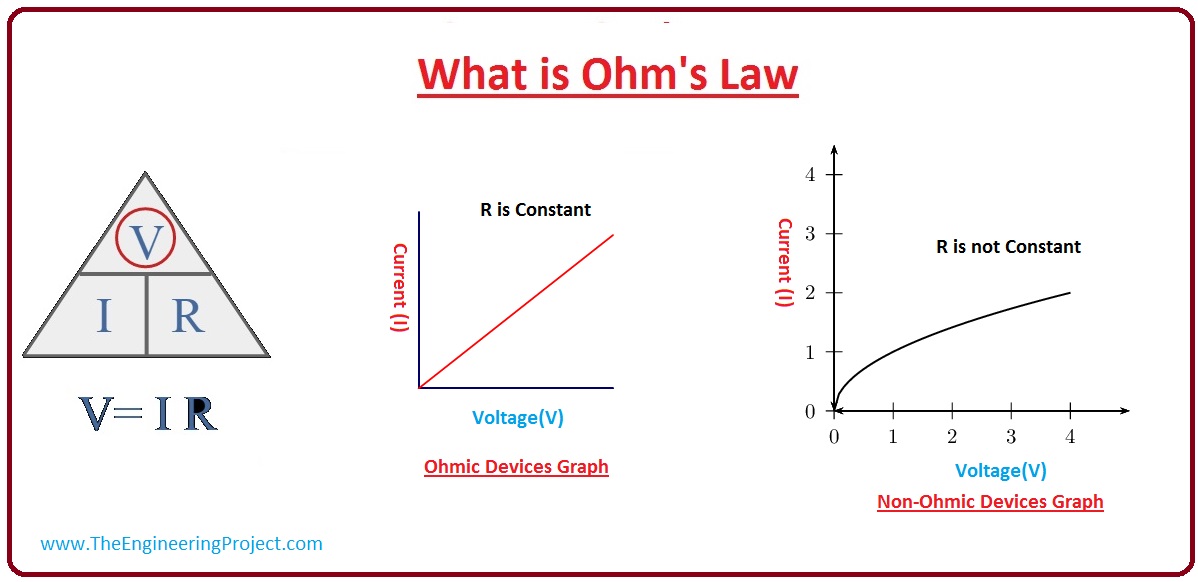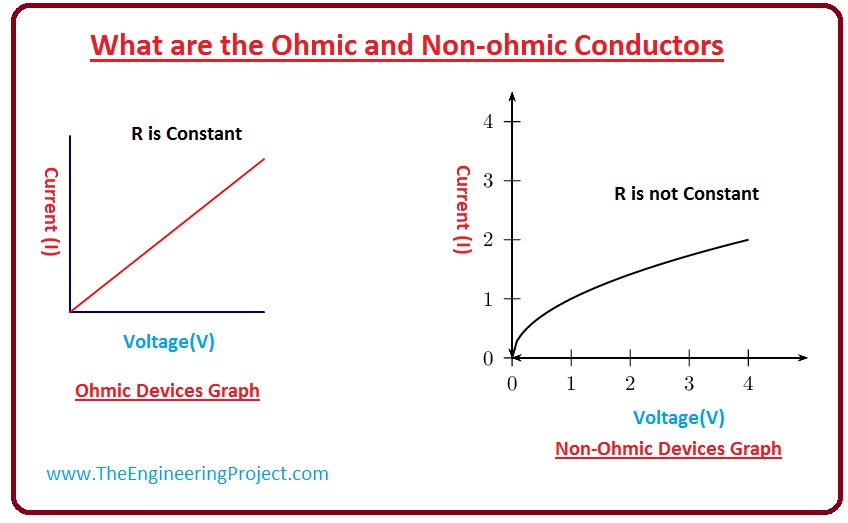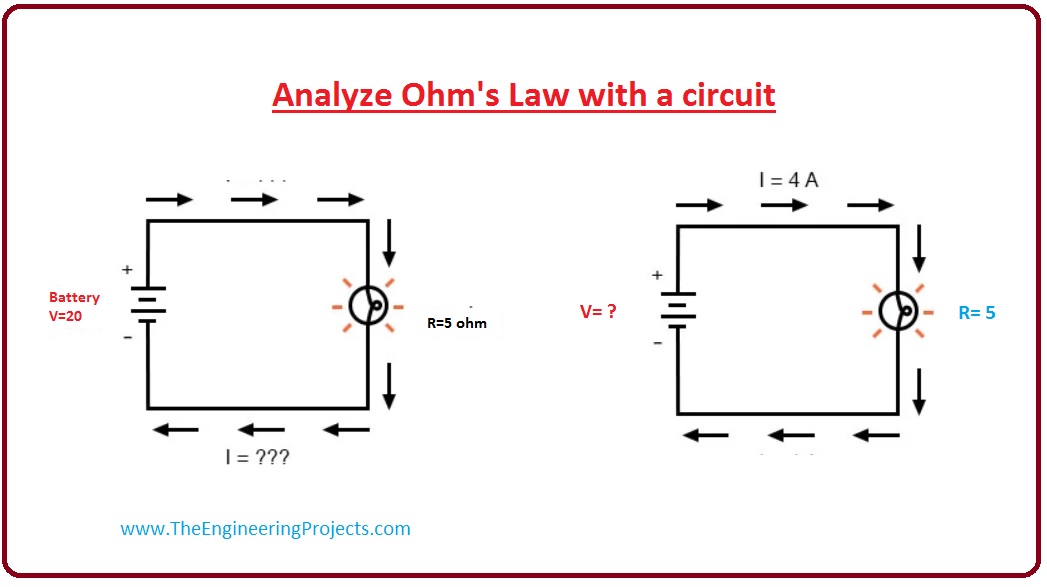
What is Ohm's Law
- Ohm's law says that the current passing through any conductor among 2 points is directly proportionate to the voltage across 2 points of the conductor if physical parameters like temperature, pressure, etc of conductor remain same.
- Its mathematical expression is.
V a I
V= IR
- In this equation (I) is the current passing through the conductor its units is amper (A), V is the voltage which is provided to conductor its unit is volts (V) and R is the resistance of the conductor it does not depend on the current of conductor the value of resistance depends on the physical parameters like temperature, pressure, etc.
- We can also define resistance as if one ampere of current is passing through any conductor when one-volt voltage is applied to it then it has a one-ohm resistance.
R (Ohm)= V (Volts) / I (amperes)
- The diagram on the right side explains Ohm's Law.

- This is an experimental law which describes the conductivity of materials over the current passing through them.
- There are numerous substances which do not follow Ohm’s findings is known as non-ohmic like semiconductor devices diodes, transistors, and bulb filament.
- A component which follows ohm's Law is known as the ohmic like Aluminium, Copper, etc.
- Such conductor which follows Ohm law its graph remains straight line and which do not follow Ohms law its graph is not a straight line.

Parameters of Ohm's Law
- Ther are three main parameters at which ohm's law depends first one is voltage, second is current, third is resistance. Now we discuss them with detailed and relate them.
- Voltage is the force which exerts by the source in electrical circuitry on the electrons to move in the circuit.
- It is the rate of movement of charges, it's unit is ampere. It denoted as I.
- It is the capability of the substance to oppose current which passing through that conductor. It designated as R and its unit is ohm.
What are the Ohmic and Non-ohmic Conductors
Ohmic Conductor- Those elements which follow ohms rule are recognized as the ohmic. These modules have a similar value of resistance (R) when we alter the value of current and voltage.
- A graphical demonstration is revealed in a given figure you can see that their graph is a straight line.
- The example of such units is metals like aluminum (Al), copper (CU), etc.
- Those modules which do not follow the ohms rule is recognized as non-ohmic. In these constituents, the value of resistance does not remain the same when we alter the applied voltage.
- The examples of these modules are semiconductor diodes, transistor, and filament of the bulb.
- You can see the graph of non-ohmic devices in a figure that the graph is not a straight line like the ohmic devices because the resistance of these components is not the constant.

Analyze Ohm's Law with the Given Circuit
- In given circuit diagram there is a very simple circuit which consists of one battery and load. Current is flowing through the circuit.
- If we know any two values of either current, resistance offered by load or voltage then we can easily apply ohm's law to find the third value.
- First of all, we calculate the value of current passing through the circuit which is shown on the left side in the diagram, the values of battery is 20 V and resistance is 5 ohm then according to Ohm's law the current is.
I=V/R = 20/5= 4
- Now we calculate the value of voltage by applying the Ohm's Law on right side circuitry.
Limitations of Ohm's Law
- These are some limits of ohms' law which are described below.
- It is not useable for individual or unilateral circuits. Such circuitries allows current to move in one direction only.
- These circuitries comprises semiconductor devices like diodes and transistor which allows current to move in one direction.
- This law is also not applicable to such components which are not linear, non-linear components are such which in which current variations are not the same to voltage changes. Such components are thyristor.
Applications of Ohm's Law
- Ohm's law is very easy to understand and implement for calculations of current-voltage, or resistance in any circuit.
- The practical uses of ohms law we do to control the speed of fan at our houses. We control speed by the regulator, basically, we vary resistance through the regulator.
- An electrical heater which we use in winter follows ohms law the heat which it produces can be found by using ohms law.
- Electrical kettles also work on the ohm law it has high values resistance which produces heat when the current passing through it we can find the value of this heat by finding current and resistance of kettle.
- The electronic components like laptops, computer, and mobile also follow ohm law because they work on dc so during their designing the values of resistances measured by ohms law.
- Fuse also works on the ohms law its resistance values measure by the ohms law.




